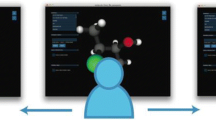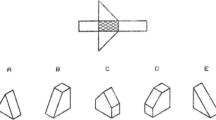Abstract
Recent educational research finds if students are encouraged to form mental images of events, objects and written or spoken words, learning of the material is enhanced. The inability to image an item may, in fact, hinder one's learning efforts in some disciplines. To find if low spatial apptitude does have a deleterious effect on learning in the life sciences, two hundred and fifty undergraduates taking a nonmajor's biology course were given tests to measure their visual-spatial awareness. Students falling more than one standard deviation from the mean were classified as low in spatial cognition and were randomly sorted into an experimental and a control group. Exercises known to enhance spatial understanding were conducted weekly with the experimental group. When the final grades for the course were examined at the end of the semester, it was found that students in the experimental group scored significantly better than the control group in the biology course. These students, however, did not reach the same level of proficiency as the students who were measuring high in spatial ability initially.
Similar content being viewed by others
References
Bishop, J.,“Developing student's spatial abilities.”The Science Teacher, 1978,45:20–23.
Bogen, J.,“Educational aspects of hemispheric specialization,”UCLA Educator, 1975, 17:24–33.
Carroll, J.,“Psychometric tests as a cognitive task: A new structure of interest,”Educational Testing Service, Princeton, New Jersey, 1976, 74–76.
Ekstrom, R., French, J., Harmon, H., and Derman, D.,“Manual for kit of factorreferenced cognitive tests,”Educational Testing Service, 1976, Princeton, New Jersey.
Frandsen, A., and Holder, J.,“Spatial visualization in solving complex verbal problems,”Journal of Psychology, 1969, 731, 229–233.
Galton, F.,Inquiries into human faculty and its development, London, MacMillan Press, 1983.
Lord, T.,“Biology and the right brain,”American Biology Teacher, 1985, 47:289–293.
Lord, T.,“Enhancing the visual-spatial aptitude in students,”Journal of Research in Science Teaching, 1985, 22(5):395–405.
Lucas, P. and DiVesta, F.,“Diagonality in adults in the interaction between spatial ability and explicitness of instruction,” paper presented at the annual meeting of the American Educational Association, Toronto, Canada, March, 1978.
McGee, M.,“Human spatial abilities: psychometric studies an environmental, genetic, hormonal, and neurological influences,”Psychological Bulletin, 1979, 86(5):889–918.
Paivio, A.,“Imagery and synchronic thinking,”Canadian Psychological Review, 1975, 16(3):147–161.
Reid, D.,“Spatial involvement and teacher-pupil interaction patterns in school biology laboratories.”Educational Studies, March, 1980, 6(1):31–41.
Rigney, J., and Lutz, K.,“Effects of graphic analogies of concepts in chemistry on learning and attitude.”Journal of Educational Pyschology, 1974, 66:499–511.
Samples, R.,“Are you teaching only one side of the brain?”Learning, February, 1975, 25–28.
Siemonkowski, F., and MacKnight, F.,“Spatial cognition: success prognosticator in college science courses,”Journal of College Science Teaching, 1971, 1:56–59.
Shepard, R, and Chipman, S.“Second order isomorphism of representations: shapes of state,”Cognitive Psychology, 1970, 1–17.
Wheatley, G., Frankland, R., Mitchell, R., and Kraft, R.,“Hemispheric specialization and cognitive development: implications for mathematics education,”Journal of Research in Mathematic Education, 1978, 9120–9130.
Wheatley, C., and Wheatley, G.,“Developing spatial ability,”Mathematics in Schools, 1979, 8(1):10–11.
Author information
Authors and Affiliations
Additional information
He became interested in visual-spatial aptitude and its effect on learning as a doctoral student at Rutgers University and furthered his studies on the topic as a post-doc at Birmingham University in England. While there he worked with Janic Weikowski and I. MacFarlene Smith, two premier British researchers on spatial perception. Dr. Lord has published several articles on spatial learning and given numerous presentations on the topic in recent years.
Rights and permissions
About this article
Cite this article
Lord, T.R. Enhancing learning in the life sciences through spatial perception. Innov High Educ 15, 5–16 (1990). https://doi.org/10.1007/BF00889733
Issue Date:
DOI: https://doi.org/10.1007/BF00889733




